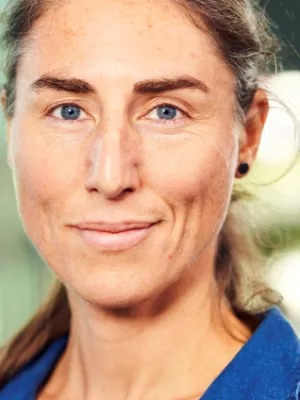
Anna Persson
Researcher

Late-season mass-flowering red clover increases bumble bee queen and male densities
Author
Summary, in English
Spatiotemporal resource continuity promotes persistence of mobile animal populations. Current agricultural landscapes are poor in flowers resources for bumble bees. Available forage crops are predominantly early-season mass-flowering crops (MFC). It has been suggested, but not tested, that scarcity of late-season flower resources are limiting bumble bee populations. We examined whether addition of late-season flowering red clover affected worker, queen and male bumble bee densities. Bumble bees were surveyed in flower-rich uncultivated field borders across 24 landscapes (radius 2 km) with or without a clover field in the centre, varying in semi-natural grassland (SNG) and early MFC availability. Clover fields had over ten times higher worker densities compared to field borders, suggesting red clover as favoured forage. Five times more queens and 71% more males were found in landscapes with clover fields compared to control landscapes, despite these fields constituting less than 0.2% of the landscape area. Both MFC and SNG increased the density of males, but only in the presence of clover fields. Our results suggest that late-flowering red clover positively affects bumble bee reproduction, likely by increasing temporal resource continuity. Interventions such as flower strips can thus have mitigating effects if they release population regulation by late-season resource bottle-necks. (C) 2014 Elsevier Ltd. All rights reserved.
Department/s
- Biodiversity
- Centre for Environmental and Climate Science (CEC)
- BECC: Biodiversity and Ecosystem services in a Changing Climate
- Biodiversity and Conservation Science
Publishing year
2014
Language
English
Pages
138-145
Publication/Series
Biological Conservation
Volume
172
Document type
Journal article
Publisher
Elsevier
Topic
- Earth and Related Environmental Sciences
- Ecology
Keywords
- Bombus
- Flower resources
- Mitigation measure
- Pollinator
- Reproductive
- success
- Trifolium pratense
Status
Published
Research group
- Biodiversity and Conservation Science
ISBN/ISSN/Other
- ISSN: 1873-2917